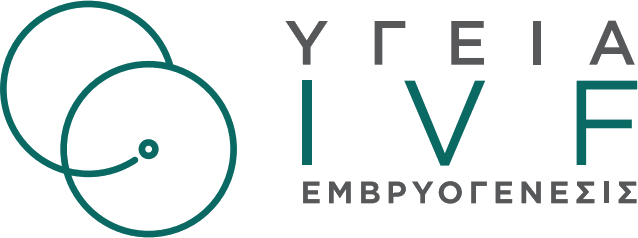Female Fertility
Female Fertility
The likelihood of a couple becoming pregnant for every month of trying is 15-20% when there is no fertility problem, while about 86% of the couples will get pregnant at the end of the first year.
To this end, the one-year limit is widely accepted. After that, the couple should seek the help of a specialist. In the last few years, it is widely accepted that this limit should be reduced to 6 months if the woman is over 35 years, while after the age of 40, the first infertility test should be performed when the couple starts trying, so as not to waste any valuable time in the event of a problem.
The investigation of the infertile couple requires regular and systematic tests, which must be performed and evaluated by Assisted Reproduction specialists.
Your desire to offer generously the love you hold inside you is also our desire.
![]()

After taking down the full medical history (including questions about previous conditions, surgeries and pregnancies, duration and characteristics of the woman’s cycle, frequency of intercourse and period of trying to conceive) three main questions remain to be answered before applying any simple or complex assisted reproduction method:
1. Is the man’s sperm capable of fertilization?
2. Is an egg released from the ovaries every month?
3. Are the fallopian tubes patent so that an egg-sperm fusion is possible?
After that, further testing should be customized as appropriate.
Female infertility factor testing includes:
Hysterosalpingography is performed 3 to 6 days after the end of the period. During the examination, contrast agent passes through the cervix, and then X-rays are taken at various phases to determine whether or not the fluid passes easily through the fallopian tubes into the pelvis. This detects any abnormalities in the uterine cavity, such as septums, submucosal uterine fibroids or endometrial adhesions, as well as the presence of abnormalities in the fallopian tubes, such as hydrosalpinx. Note that even if it has been decided to apply IVF to a couple, a hysterosalpingography should still be performed since, for example, the presence of hydrosalpinx significantly minimizes the results of the attempt and, therefore, it is recommended to address it before starting.
A newer method is ultrasound hysterosalpingography with the use of a suitable fluid, which is performed easier and painlessly, and gives valuable information.
From the woman’s medical history, if she has a steady cycle lasting 25 to 34 days, it is most likely that there are no ovulation problems. A traditional method of documenting ovulation is taking the body temperature with a conventional thermometer every morning before the woman gets out of bed. A day after possible ovulation, there is an increase in temperature by a few tenths of a degree, which remains until the next period. This method is simple, but the disadvantage is that body temperature can be affected by other factors, leading to wrong conclusions. Measurement of blood progesterone 7 days before the expected period (e.g. on the 21st day of a 28-day cycle) shows elevated levels (above 3 ng/mL) if ovulation has preceded.
Consecutive measurements of the luteinizing hormone (LH) in the woman’s blood or urine reveal elevated levels a few hours before the upcoming ovulation. Finally, with successive ultrasounds, it is possible to monitor the prevailing ovarian follicle that grows during the cycle and to detect its rupture when and if ovulation takes place.
In the last few years, to determine the ovarian reserves, measuring the anti-müllerian hormone (AMH) in the blood on any day of the cycle provides extremely reliable results. The same applies for measuring the small ovarian follicles identified by ultrasound within the first days of the cycle (antral follicle count, AFC). The assessment of ovarian reserves with AMH acquires special prognostic value in women who:
• are over 35 years old
• have a family history of early menopause
• do not have immediate plans for pregnancy and would be interested in the possibility of egg freezing to preserve their fertility
• are about to undergo IVF
• had poor response to previous pharmaceutical ovarian stimulation
• show unexplained infertility
• have one ovary
• have a medical history of ovarian surgery, chemotherapy or pelvic radiotherapy.
It is performed in cases where there is a suspicion of an endocrinology disorder, such as excessive hair growth, polycystic ovaries on ultrasound and menstrual disorders. The conventional hormonology test is performed on specific days of the cycle and includes, depending on the case, the measurement of estrogen, progesterone, androgens, pituitary releasing hormones (FSH, LH), prolactin, thyroid hormone levels and others.
In case of doubt, as well as upon detection of abnormalities during hysterosalpingography or ultrasound, testing may need to be supplemented by hysteroscopy and/or laparoscopy. Hysteroscopy, which should be performed within the first days after the end of the period, ensures accurate testing of the cervical canal and the uterine cavity with the openings of the fallopian tubes. The hysteroscope (a long thin tube) is inserted through the cervix into the uterine cavity, which is simultaneously filled with fluid, so that it can be monitored live. If any abnormalities are found (endometrial or endocervical adhesions, endometrial polyps, uterine septums), it is possible to fix them at that time by using special advanced microsurgery tools that are inserted through the hysteroscope. Ideally, hysteroscopy could be performed as part of conventional testing, but it is usually performed after 2-3 failed embryo transfers or when endometrial abnormality is suspected. It is an extremely interesting observation in many recent studies that hysteroscopy in women with 2 or more implant failures may increase the success rates in subsequent attempts, even if no specific pathology is found; this is attributed to endometrial stimulation from injury inflicted by the hysteroscopy. Alternatively, this endometrial stimulation can be achieved through injuries inflicted by a thin catheter that is inserted through the cervix into the endometrial cavity, a technique also known as scratching and performed in the previous embryo transfer cycle.
Laparoscopy examines the entire pelvis of the woman and detects the presence of adhesions or endometriosis, as well as the condition of the fallopian tubes, while investigating whether they are patent by injecting a blue dye from the cervix, which, if there is no hydrosalpinx, is found to come out of the fallopian tubes. Laparoscopy is always performed in an operating room under general anesthesia and with the use of suitable equipment.
Finally, every couple undergoing any method of assisted reproduction should be screened in accordance with the applicable law (both partners) for Australian antigen of hepatitis B, hepatitis C, HIV and syphilis infection.
